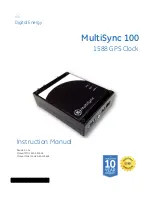
Normal Mode and PPM Mode
The difference between normal mode and PPM mode is in the type of signal that OSD will
expect in the control input. Whether your receiver is PPM or PCM, if you connect the OSD to a
receiver servo output, you should use "normal" mode. Exceptionally, some receivers provide a PPM
output combining information from all channels as they get it from the radio. In other cases, even not
directly provide by the receiver, can be easily obtained from a circuit point (of a pin in the decoding
chip that output signals to each of the servos).
If your receiver is PCM, since the signal received by the radio is not PPM, the signal may not
be used. However, you can use an encoder / multiplexer circuit that receives the signal and mix
multiple channels into a single PPM signal. Some of these circuits are published for free on the
Internet, and also its firmware, based on the Arduino platform.
In any case, with the help of an external stabilizer, you can use the autopilot functions, driving
only the tail and motor channels (leaving aileron and elevator under the control of external stabilizer).
Servos travel expander
Normally the operating range provided by the R/C transmitters gives the servo a travel of about
90 degrees approximately (1100us - 1900us). However, for the PAN camera control this is
insufficient. The servos on the other hand allow a much wider travel, close to 180º. Using the travel
expander function, may increase the travel of those servos without any additional hardware.
Properly adjust the gain factor (Ikarus OSD) and the lower and upper limits (R/C transmitter) in
order to achieve the highest possible path, without being force the servo outside their limits. For a
smoother motion, we recommend to try to adjust the widest range at the R/C transmitter, and use a
multiplication factor as small as possible.
Camera Select
Ikarus OSD allows the use of two different cameras. Using a video switch, you can select of
which camera you want to get the video signal at any time. This allows a camera for normal flight,
while the second camera gives us an overhead view of the land over we fly.
To simplify operation, and because of the limitations in channels number, in almost every
mode the secondary camera is linked to the third screen of the three possible flight screens. If you
are going to use only one camera, you can indicate it in the OSD setup menu to always keep the same
selection.
Note that although only using a camera at anytime, the two cameras will be power at all times.
This way you can quickly switch between cameras without waiting for them to power up and provide a
stable video signal. Since the two cameras are not synchronized, maybe in the change from one to
another will lose some video frames until the receiver adjust to the new syncs.
© Ikarus Team Sevilla 2010
Page. 3/60

































